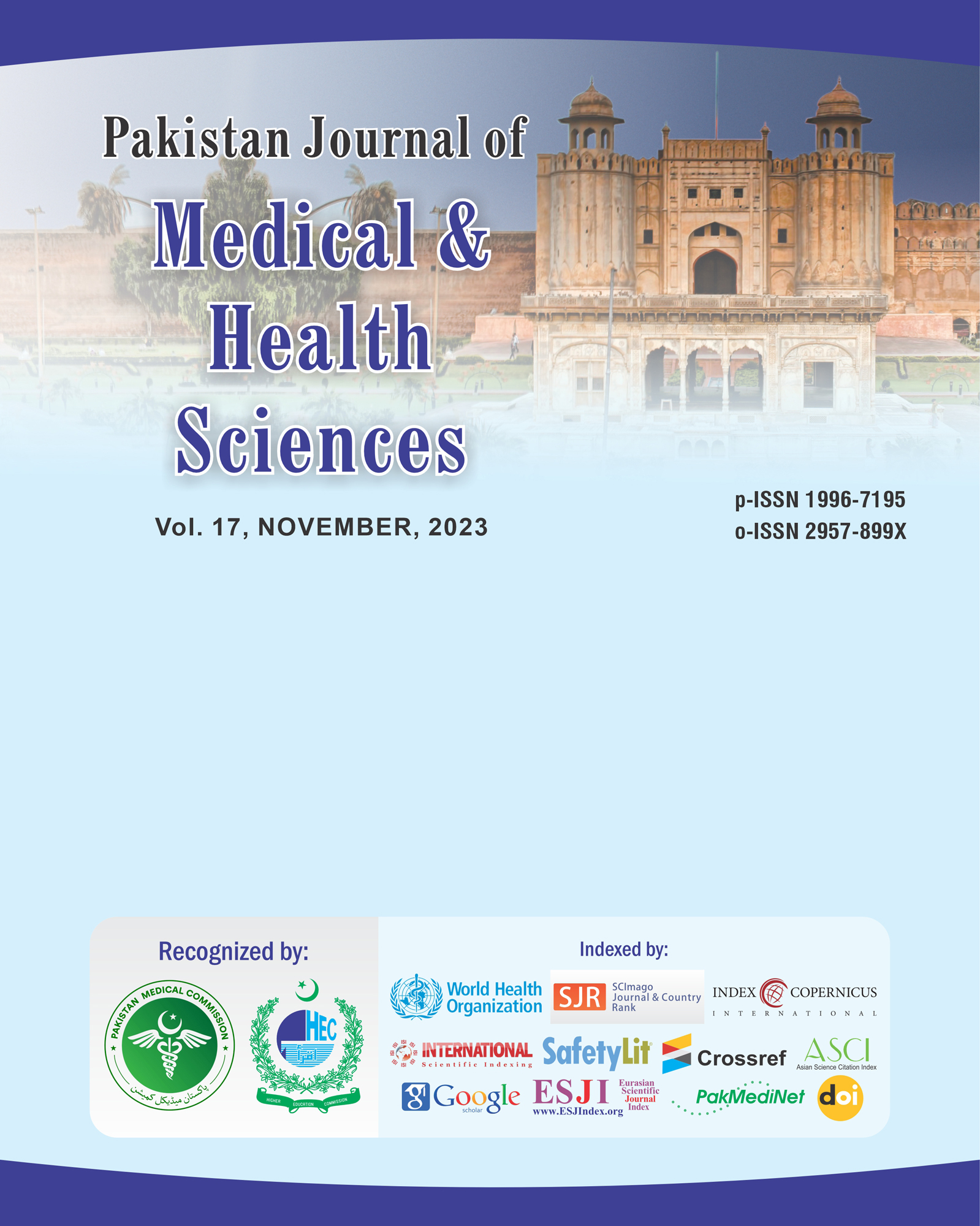Community-Based Assessment of the Prevalence of Metabolic Syndrome and Its Association with Biochemical Markers Among Rural and Urban Populations in Pakistan: A Comparative Study
DOI:
https://doi.org/10.53350/pjmhs0202317111210Abstract
Background: Metabolic syndrome (MetS) is a cluster of metabolic abnormalities that predispose to the development of cardiovascular diseases and type 2 diabetes. Rapid urbanization and lifestyle changes in Pakistan are leading to a rise in MetS prevalence, especially in urban populations.
Aims and Objectives: This study compared the prevalence of MetS and its correlation with the major Biochemical markers in urban and rural populations of Pakistan. It also sought to find out which demographic and lifestyle factors, such as sedentary behavior and an increase in body mass index (BMI), are associated with the risk of MetS.
Methodology: The study was conducted from April 2022 to April 2023 in Al-Nafees Medical College, Islamabad, and the Pathology Department of Nishtar Medical University and Hospital, Multan, using a community-based cross-sectional study. Stratified random sampling was used to recruit 125 urban and 125 rural adults aged 25–65 years in a total of 250 adults. Age, gender, BMI, waist circumference, education, employment and income were collected in detailed demographic information. Fasting blood glucose, lipid profile (triglycerides, HDL-C, LDL-C, total cholesterol), fasting insulin (to calculate HOMA-IR), and high-sensitive C-reactive protein (hs CRP) were measured. The International Diabetes Federation criteria were used to diagnose MetS.
Results: Participants in the urban setting had significantly higher BMI, waist circumference, and a higher prevalence of sedentary lifestyles. Diagnosis of MetS was made in 35.2% of urban subjects versus 24.8% of rural subjects (p = 0.03). Elevated fasting blood glucose, triglycerides, fasting insulin, HOMA-IR, and hs-CRP were also observed in urban subjects.
Conclusion: Metabolic syndrome and adverse biochemical profiles are higher in the urbanized population of Pakistan. Urgent targeted public health interventions for promoting physical activity and a healthier dietary practice in urban communities are needed.
Keywords: Metabolic syndrome, urbanization, biochemical markers, Pakistan, cross-sectional study, sedentary lifestyle
Downloads
How to Cite
Issue
Section
License
Copyright (c) 2023 Ayesha Javaid, Saima Iram, Salman Ahmed Niaz Mangrio, Uneeba Syed, Masud Ali Ansari, Bushra Anwer

This work is licensed under a Creative Commons Attribution 4.0 International License.


